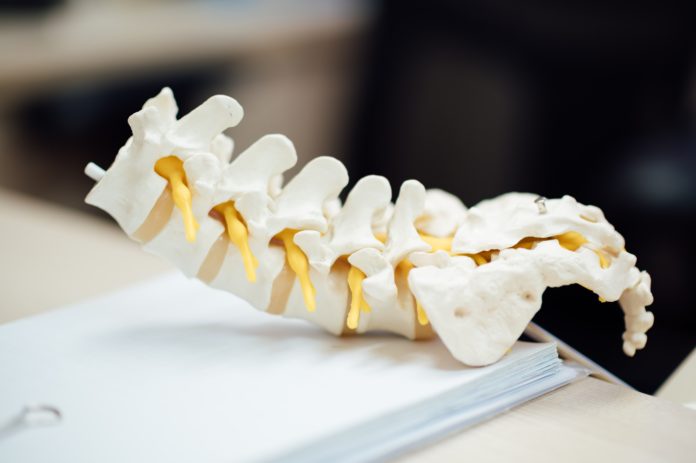
Within her medical malpractice work, Katherine Otto has developed a niche defending chiropractors against malpractice claims. While Otto regularly defends doctors, nurses and other licensed medical providers, in her experience, there are unique nuances to representing chiropractors.
“While not every medical malpractice attorney does chiropractic work, chiropractic work is considered medical malpractice work,” explained Otto, who noted chiropractors are licensed health care providers subject to regulation and professional liability rules like other medical professionals, like doctors and nurses, are.
Having represented both chiropractors and other medically licensed professionals, Otto said she’s been able to see the differences between the medical practices of the two and incorporate that into her representation.
“The way that they approach their practice, the way that they approach their profession, the way that they approach medicine and helping people is different,” said Otto. “There’s no good or bad, it’s not a value judgment, it’s just incredibly different.”
Otto has been practicing law since 2008. When she first started taking on medical malpractice defense cases, she said she saw a handful of cases involving chiropractors. As she took on other chiropractic cases, her practice organically grew. Now a partner at Messner Reeves, Otto estimates about 80% of her practice involves medical malpractice and about half of those cases involve chiropractors. Otto is based out of Colorado, but is also licensed to practice in New York and said she occasionally joins chiropractic defense cases in other states as pro hac vice counsel.
Within her chiropractic practice, Otto said she comes across cases that fall into two main categories: malpractice lawsuits or investigations by a licensing agency.
Within the malpractice lawsuits, there are three main categories, Otto said.
One category of malpractice claims are patient allegations that a chiropractor behaved inappropriately or assaulted them, resulting often in emotional distress claims. The second category are allegations the chiropractor was negligent in their treatment and caused a non-life threatening injury such as a cracked rib or worsened pain, Otto explained.
The final category, the least common but most serious type of cases, are instances when a patient alleges treatment led to a catastrophic or life threatening injury, such as a stroke, explained Otto.
“Those are very complex, intensive cases. That is kind of the scariest thing a chiropractor can be facing,” said Otto, who added that while very rare, those cases often involve multiple expert witnesses, sometimes between five to eight on each side, at trials that can take weeks to wrap up.
If a case makes it to trial, Otto said there are several unique considerations she needs to take into account when representing a chiropractor compared to a doctor, a nurse or a different medical practitioner.
“One of the biggest challenges and how it’s different than representing other medical providers is lack of general knowledge about what chiropractors do, community bias against chiropractors and medical provider bias against chiropractors,” explained Otto. “I think that chiropractors are not always given the deference and respect of medically trained health care providers.”
When selecting jurors, Otto said she will ask questions to eliminate potential jurors who have a negative bias against the practice and try to keep jurors who have been to a chiropractor before or would be open minded to learning more about the training behind the practice.
In her experience, bias exists among medical doctors as well Otto noted, which can come up both before and during litigation. Otto said if a doctor has a negative bias towards chiropractors, they might be quick to attribute a patient’s symptoms to having been treated by a chiropractor. Or, at trial, Otto said a doctor witness’ testimony might be impacted by their bias.
“Once that’s there, my job as the advocate is to really dig down deep into that and to expose the bias, to explore the bias, to explain the bias, because juries are quite deferential to medical providers,” said Otto. From an evidentiary standpoint, challenging a doctor who claims a chiropractor injured a plaintiff can be difficult, Otto noted, but she said she will often ask the doctor to articulate what in the chiropractic session led to the injury. If a doctor doesn’t really know much about the chiropractic treatment but insists it led to injury, Otto said, that can show underlying bias to a jury.
“That’s where experience in chiropractic and understanding chiropractic is really crucial to a successful defense of care,” added Otto.
Bias against chiropractic can also extend to lawyers, said Otto, who explained when she represents clients she tries to show that she understands and is open to learning more about their background. Otto said if a lawyer is used to taking on medical malpractice cases for doctors, they might project some of their own bias onto a chiropractor client which can harm the attorney-client relationship and ultimately the case. That’s one reason Otto said she believes chiropractic defense is a niche of medical malpractice.
“I think if someone comes in trying to represent a chiropractor and just assumes that they all do the same thing, that is a real disservice to their client and is going to undermine that working relationship,” said Otto.
To foster that relationship, Otto said she will sometimes meet the client at their office, she will ask about their philosophy, ask about their specialties and try to get to know them as an individual.
“I make sure when I work with my chiropractic clients that they know I understand and have educated myself on their profession,” said Otto. “Getting to know the individual chiropractor, their philosophy, their kind of passion within their practice, is really important.”

